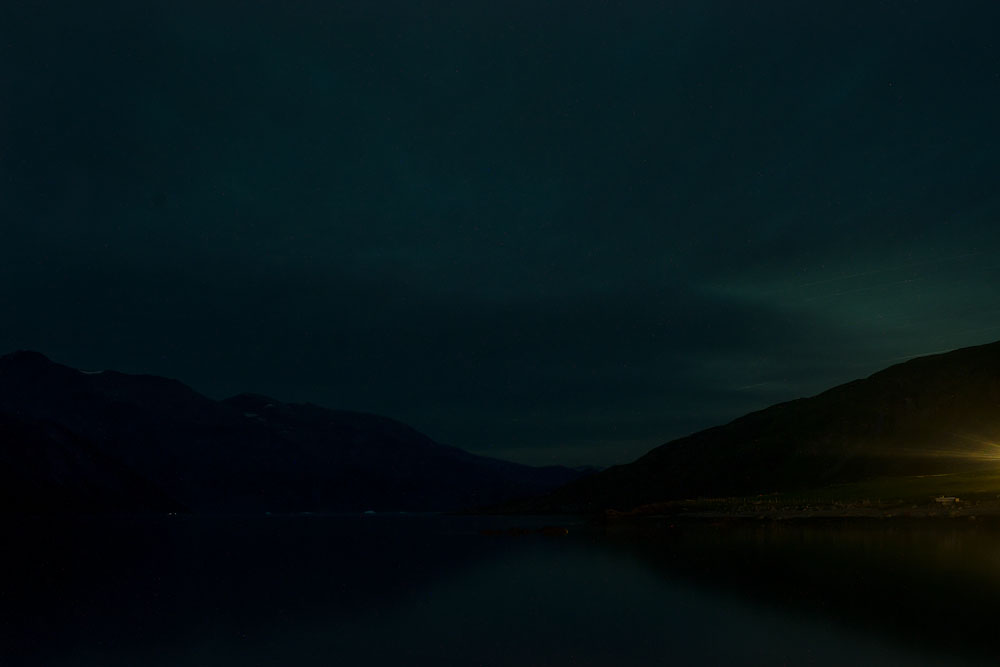Grant to Photograph Baffin Island at Night
Informed by changing climate, history and culture, I will photograph the haunting isolated beauty of Nunavut’s arctic landscape, focusing both on the rapidly receding glaciers as well as the cultural changes in the extremely remote Inuit settlements of Baffin Island.
The goals are to capture a feeling of loss and mystery revealed through the contracting ice, centered on the parallels between dramatic climate changes and culture.
Centered Around Three Areas
This photography project traces changes to land, ice and communities. The the three main locations are the:
- Barnes Ice Cap, one of the last remnants of North American ice sheet, which is fast-retreating.
- Glacial formations in Sirmilik National Park.
- “Suicide Prevention Walk”, a 37 mile trek across the tundra from Qikiqtarjuaq to Kivitoo to highlight modern changes happening in the communities.
Specifically, this includes the scarred landscape and newly exposed ground left in its wake; newly formed rivers from the ancient ice melt; shrinking icebergs and ice floes; images of small Inuit settlements’ such as Qikiqtarjuaq, Pangnirtung, Clyde River, Pond Inlet; National Parks of Sirmilik and Auyuittuq; abandoned villages; Inuit ruins; and vast, empty landscapes with small traces of human intervention–all taken at dawn, twilight, or nighttime.
Beyond documentation, however, these photographs crystallize a feeling of inertia taking place in the primordial landscape of the arctic.
Isolation and History
Baffin Island is one of the most isolated places in the world. Pre-Dorset and Dorset peoples inhabited the Island for thousands of years, but Norse explorers from Greenland believed to have traded there in the Eleventh Century (perhaps mentioned in the Grœnlendinga saga and the Saga of Erik the Red). In the 1610s, the area was surveyed by British explorers William Baffin and Robert Bylot. As the world’s fifth largest island, only a handful of small settlements make up the population of 11,000.
But melting ice impacted seal, whale and polar bear hunting leading to declining income, forcing native peoples to change or move. As a result of unprecedented cultural upheaval, suicide rates and alcoholism spiked. The suicide rate among Nunavut Inuit is 13 times the rate in the rest of Canada (roughly on par with nearby Greenland).
Baffin Island is significant because is it is the site of last and oldest remnant of the north American ice sheet, as well as the location of fast-receding glaciers. Containing ancient 20,000 year old ice, the Laurentide ice sheet covered much of Canada during the last ice age. The Barnes Ice Cap in central Baffin Island was part of this, and now, shrunken to 2,300 square miles, is climate change incarnate: ice recedes at about 3mm daily or more than 3 feet per year.
The Auyuittuq National Park and Sirmilik National Park also have extreme examples of climate change in the form of melting glaciers. Across from Pond Inlet is Sirmilik National Park on Bylot Island, site of the strange “The Mothership,” a 3-mile wide strange lobe of a glacier flowing down from the interior (painted by Lawren Harris, one of the Group of Seven mid-century Canadian artists).
Local Communities
Climate change brings change to communities. To combat the deadly health crisis hitting these remote regions, Qikiqtarjuaq hosts an annual “Suicide Prevention Walk,” where local participants walk about 37 miles to Kivitoo, an abandoned whaling station, meant to promote hope among the community. I will trek along this path, making long-exposure photographs at night/twilight.
Local Inuit culture and political issues are key to my work. While much of the project’s focus is on the landscape, the impact of warming temperatures on politics, communities, and culture are viscerally important. This is why documenting the extreme melting of the Barnes Ice Cap ice, the melting glaciers in the National Parks, and the Qikiqtarjuaq “Suicide Prevention Walk” were specifically chosen. Hopefully it will bring attention to these issues.
Social Media and 360 Degree Video
Finally, new media image making will be used such as 360 degree photos and possibly virtual reality cameras recording the night scenes and other locations. I will share images, comments and blog posts live and as they happen on Instagram, Snapchat, Twitter, and Facebook, to develop both local and international interest in the project.





Comments are closed.